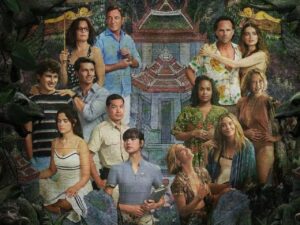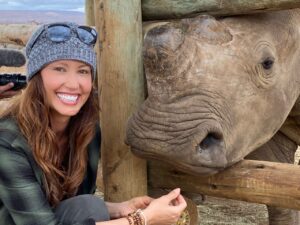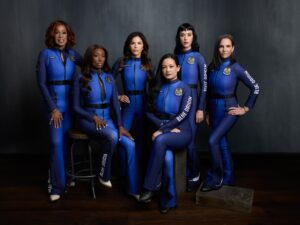[imagesource: François Brunelle]
Happy Friday.
I’m sure at some point we’ll get to a grim news story covering some or other horrible happening.
For now, we start with a study around unrelated doppelgängers that you may actually share DNA with.
The story begins with a photography project by François Brunelle, a Canadian artist. It was titled “I’m not a look-alike!” and was inspired by Brunelle encountering his own lookalike, the rather recognisable Rowan Atkinson.
Reporting below via The New York Times:
The project has been a hit on social media and other parts of the internet, but it’s also drawn the attention of scientists who study genetic relationships.

Dr. Manel Esteller, a researcher at the Josep Carreras Leukaemia Research Institute in Barcelona, Spain, had previously studied the physical differences between identical twins, and he wanted to examine the reverse: people who look alike but aren’t related. “What’s the explanation for these people?” he wondered.
Dr. Esteller and his team then recruited 32 pairs of lookalikes from Brunelle’s photographs and asked them to take DNA tests.
Facial recognition software was used and 16 of the 32 pairs had facial similarities in line with identical twins.
In a paper published earlier this week, they made some interesting findings:
Dr. Esteller found that the 16 pairs who were “true” look-alikes shared significantly more of their genes than the other 16 pairs that the software deemed less similar.

“These people really look alike because they share important parts of the genome, or the DNA sequence,” he said. That people who look more alike have more genes in common “would seem like common sense, but never had been shown,” he added.
The headline takeaway, in a simplified nugget, is that people who resemble each other, but are not directly related, still seem to have genetic similarities.

For those who are nature over nurture, tally a notch on the scorecard in your favour:
Dr. Esteller found that while the doppelgängers’ genomes were similar, their epigenomes and microbiomes were different. “Genetics put them together, and epigenetics and microbiome pulls them apart,” he said.

This discrepancy tells us that the pairs’ similar appearances have more to do with their DNA than with the environments they grew up in. That surprised Dr. Esteller, who had expected to see a bigger environmental influence.
Your chances of having a doppelgänger out there are pretty good.
In essence, there are only so many ways to build a face and “there are so many people in the world that the system is repeating itself,” Dr. Esteller said.

I should balance out the nature versus nature debate with a comment from Dr. Karen Gripp, a pediatrician and geneticist at Nemours Children’s Health, whose research is referenced in this study.
She spoke with CNN:
“As a geneticist, I firmly believe in the nature and the genetic material being very important to almost everything, but that does not take away from saying nurture is just as important,” Gripp said.

“For every person to be successful in the world there are so many contributing factors and the environment is so important that I don’t think it’s one or the other.”
There’s nothing wrong with saying both nature and nurture play a role.
You’re not sitting on the fence, you’re using your noggin.
Good luck finding your doppelgänger. They’re out there somewhere.





